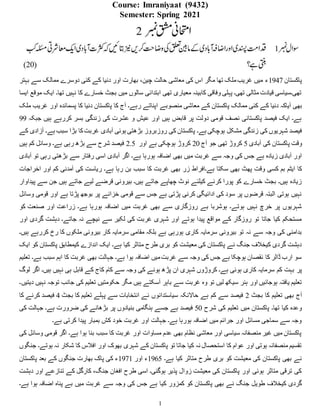Analysis: Pierre Poilievre's Electoral Setback In Canada

Table of Contents
Poilievre's Campaign Strategy and Messaging
Pierre Poilievre, elected leader of the Conservative Party of Canada in 2022, brought a populist and socially conservative platform to the campaign trail. His campaign aimed to capitalize on widespread public dissatisfaction with the Liberal government, particularly regarding economic issues.
Strengths of the Campaign:
- Strong Social Media Presence: Poilievre effectively leveraged social media platforms like Twitter and TikTok, reaching a younger demographic often overlooked by traditional political campaigns. His short, impactful videos resonated with many, showcasing his ability to connect directly with voters. For example, his use of memes and relatable language significantly boosted engagement.
- Focus on Specific Issues: The campaign successfully tapped into voter anxieties about inflation and the cost of living, framing Poilievre as a champion of economic freedom and fiscal responsibility. This resonated particularly with certain segments of the population, such as small business owners and those in lower-income brackets.
Weaknesses of the Campaign:
- Perceived Extremism: Some of Poilievre's policy positions, particularly on issues like climate change and social justice, were perceived as extreme by a significant portion of the electorate. His rhetoric, often characterized as confrontational, alienated potential swing voters. For instance, his criticism of the carbon tax and his stance on certain social issues were seen as too divisive for a broad-based appeal.
- Lack of Broad Appeal: While his message resonated with a core Conservative base, the campaign struggled to broaden its appeal to undecided voters and those traditionally supporting other parties. The lack of a compelling vision for a diverse Canada hindered outreach to crucial demographics. This resulted in the inability to gain traction outside the traditional Conservative voter base.
- Ineffective Targeting: While strong on social media, the campaign's broader targeting strategies seemed less effective. Insufficient attention to specific regional concerns and tailored messaging might have lost ground in key ridings. A more nuanced approach to regional concerns could have significantly improved results.
The Impact of Key Issues on the Election
Several key issues significantly influenced the election outcome, shaping voter choices and impacting Poilievre’s chances of victory.
Economic Concerns and the Cost of Living Crisis:
- The soaring cost of living was a central concern for many voters. Poilievre's promises to cut taxes and reduce government spending resonated with some, but his proposals were also criticized for lacking sufficient detail and potentially exacerbating existing economic inequalities. Polling data indicated a widespread concern about the economy, but not a strong enough link to Poilievre’s solutions.
- Analysis of economic indicators showed a high level of economic anxiety, which the Conservative campaign attempted to harness. However, this connection was not effectively translated into concrete policy proposals that resonated across all economic demographics.
Social and Cultural Issues:
- Debates on healthcare, climate change, and social justice also played a role. Poilievre's positions on these issues, often seen as socially conservative, did not attract significant support from moderate or progressive voters. His more conservative stance on topics such as environmental policy and social programs proved a barrier in certain key areas.
- Public opinion polls revealed a significant divide on these social issues, indicating a need for a more inclusive strategy capable of appealing to a wider range of perspectives.
Leadership and Public Perception:
- Poilievre's leadership style, often characterized as combative and uncompromising, contributed to a negative public perception among some segments of the population. His direct and occasionally aggressive approach was considered off-putting by some voters. This negatively impacted his image as a potential prime minister.
- Media coverage and expert commentary frequently highlighted his more polarizing stances, further solidifying this perception in the public consciousness. Poilievre's personal brand did not effectively convey a sense of unity or national leadership.
Comparison with Previous Conservative Performances
Historical Context:
- Comparing Poilievre's performance to that of previous Conservative leaders like Andrew Scheer and Erin O'Toole reveals some striking similarities and differences. All three faced challenges in expanding the party's appeal beyond its traditional base. However, Poilievre's campaign arguably faced unique hurdles in the age of social media, where carefully constructed messaging is critical for success.
- Historical data from previous elections shows that the Conservative Party has often struggled to win over voters in urban centers and among younger demographics. This trend persisted under Poilievre's leadership.
Lessons Learned:
- The Conservative Party must learn from this setback to broaden its appeal and develop a more inclusive and less divisive platform for future elections. This involves reassessing messaging, policy proposals and leadership style.
- A key lesson is the need to effectively address concerns across the economic and social spectrum. More targeted messaging is vital, as is finding common ground with voters beyond the traditional Conservative base.
Understanding Pierre Poilievre's Electoral Setback – A Path Forward for the Conservatives
In conclusion, Pierre Poilievre's electoral setback was a result of a complex interplay of factors. His campaign, while effective in certain areas (strong social media presence, focus on economic anxiety), suffered from perceived extremism, a lack of broad appeal, and ineffective targeting. Key issues like economic anxieties, social and cultural divisions, and public perception of his leadership all played significant roles. Compared to previous Conservative leaders, Poilievre faced the additional challenge of navigating the rapidly changing media landscape. For the Conservative Party to achieve future electoral success, a significant shift in strategy is necessary. This includes addressing concerns about perceived extremism, broadening the party's appeal, and adopting a more inclusive and less divisive approach. A thorough understanding of Pierre Poilievre's electoral setback is crucial for navigating the future of Canadian politics. Further discussion and analysis of these issues are vital for shaping the future direction of the Conservative Party and the Canadian political landscape.

Featured Posts
-
 Prominent Palestinian Journalist Arrested During West Bank Raid By Israeli Forces
May 01, 2025
Prominent Palestinian Journalist Arrested During West Bank Raid By Israeli Forces
May 01, 2025 -
 Lich Thi Dau Chinh Thuc Giai Bong Da Thanh Nien Sinh Vien Quoc Te 2025 10 Tran Cau Dinh Cao
May 01, 2025
Lich Thi Dau Chinh Thuc Giai Bong Da Thanh Nien Sinh Vien Quoc Te 2025 10 Tran Cau Dinh Cao
May 01, 2025 -
 Is Xrp A Commodity The Secs Stance And Ongoing Debate
May 01, 2025
Is Xrp A Commodity The Secs Stance And Ongoing Debate
May 01, 2025 -
 Legal Battle Did Channel 4s Documentary Plagiarize Earlier Work
May 01, 2025
Legal Battle Did Channel 4s Documentary Plagiarize Earlier Work
May 01, 2025 -
 Bhart Pakstan Tnaze Tyn Jngwn Ke Bed Bhy Kshmyr Msylh Hl Nh Hwska
May 01, 2025
Bhart Pakstan Tnaze Tyn Jngwn Ke Bed Bhy Kshmyr Msylh Hl Nh Hwska
May 01, 2025
Latest Posts
-
 Alex Ovechkin Ties Wayne Gretzkys Nhl Goal Record With 894th Goal
May 01, 2025
Alex Ovechkin Ties Wayne Gretzkys Nhl Goal Record With 894th Goal
May 01, 2025 -
 De Andre Hunters Stellar Game Propels Cavaliers Past Trail Blazers
May 01, 2025
De Andre Hunters Stellar Game Propels Cavaliers Past Trail Blazers
May 01, 2025 -
 Cleveland Cavaliers Extend Winning Streak To 10 With Overtime Win Against Portland
May 01, 2025
Cleveland Cavaliers Extend Winning Streak To 10 With Overtime Win Against Portland
May 01, 2025 -
 Celtics Defeat Cavaliers 4 Important Observations From Derrick Whites Performance
May 01, 2025
Celtics Defeat Cavaliers 4 Important Observations From Derrick Whites Performance
May 01, 2025 -
 Hunters Strong Performance Fuels Cavaliers 10 Game Winning Streak
May 01, 2025
Hunters Strong Performance Fuels Cavaliers 10 Game Winning Streak
May 01, 2025
